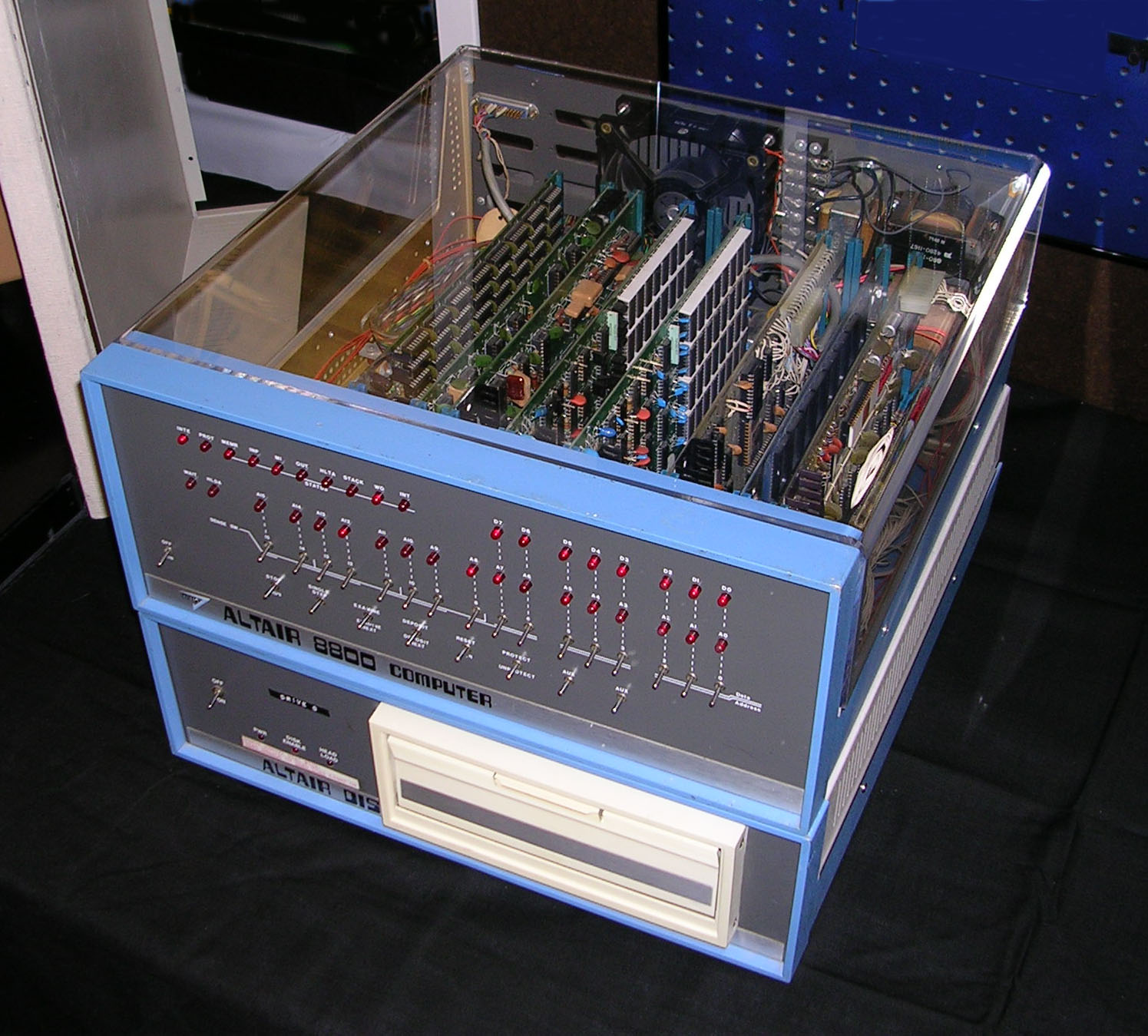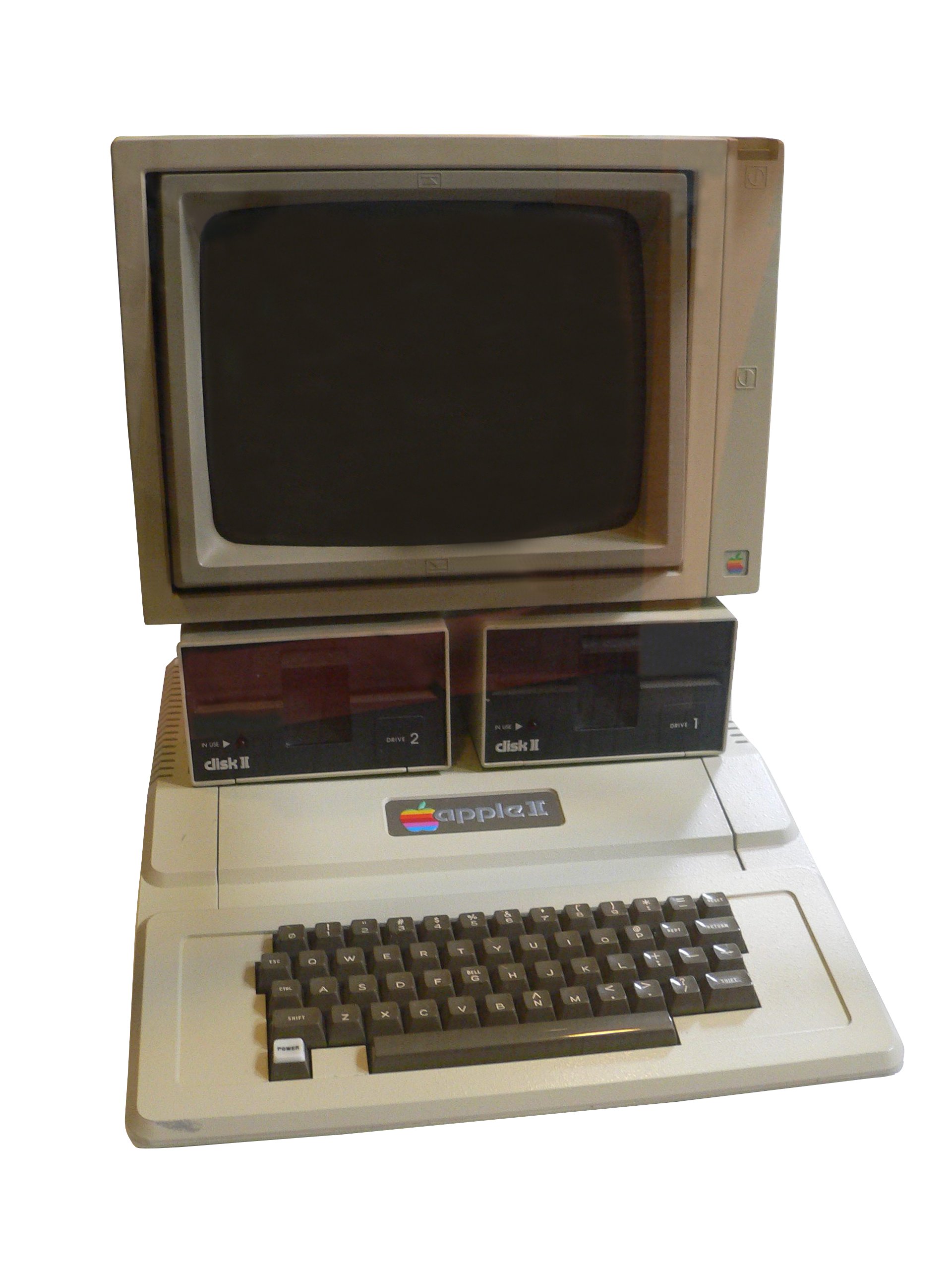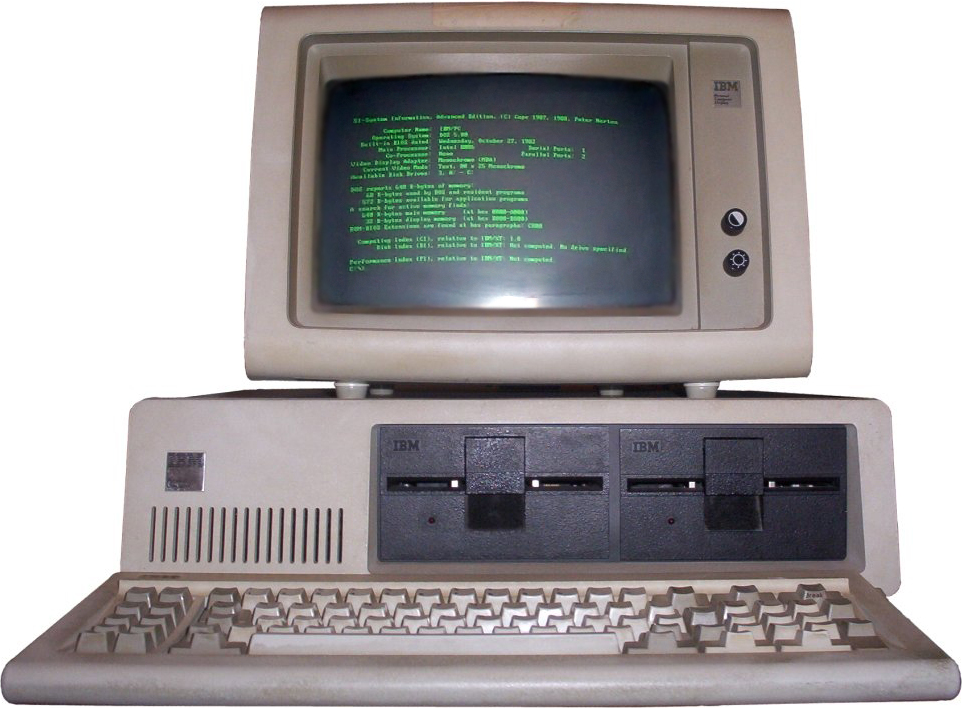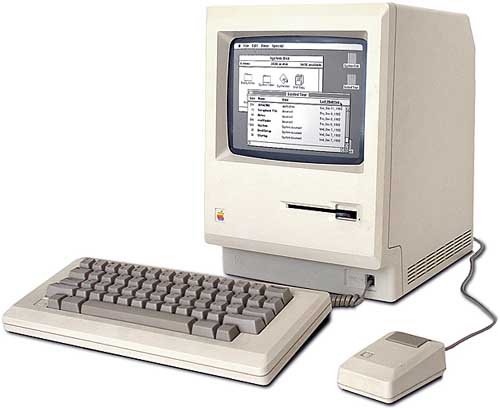
I looked at an Apple II PC, but didn't get it ...

I looked at an IBM PC 8088, but didn't get it...

I looked at a Macintosh, and I did get it ... :-)

And finally today ... it's ...

Posted on 04/26/2010 10:57:26 AM PDT by ShadowAce
How will we know when IPv4 address space is all used up? And what will happen when that day comes?
The modern Internet has been built using IPv4 (define), which provides for 4.3 billion address, a supply that could run dry within the next two years. Organizations that allocate IP address space like the American Registry for Internet Numbers (ARIN) have attempted to forecast when IPv4 address space will be gone, but it's not an exact science, and there is no precise date to mark on a calendar.
At the ARIN XXV policy meetings held here this week, ARIN CIO Richard Jimmerson explained how the organization expects to know when the final IPv4 address is gone.
"We will run out of IPv4 address space and the real difficult part is that there is no flag date. It's a real moving date based on demand and the amount of address space we can reclaim from organizations," Jimmerson told InternetNews.com. "If things continue they way they have, ARIN will for the very first time, sometime between the middle and end of next year, receive a request for IPv4 address space that is justified and meets the policy. However, ARIN won't have the address space. So we'll have to say no for the very first time."
Saying no to an IPv4 request will be shocking to some organizations, which is why ARIN is trying to get the word out now on the importance of moving to IPv6, Jimmerson said. The IPv6 (define) address space, the next generation of IP addressing, provides 340 trillion trillion trillion (34 x 10 to the 38th power) Internet addresses.
The first time that ARIN declines an IPv4 address request won't necessarily be the date that IPv4 is completely exhausted.
"It will be a different date for different sizes and types of organizations," Jimmerson said. "For instance there are some large national organizations that make address space requests of big blocks. They'll be the first ones to come in and we'll have to tell them we don't have as much as they want and they'll have to take a smaller block. That will be the first indication."
For other organizations requesting smaller blocks of a few thousand addresses, IPv4 may be available for a longer period of time. But eventually, ARIN will reach the point when it won't be able to fulfill even small requests, Jimmerson said
To date, the smallest address size allocation ARIN has issued is what is referred to as a /22 address block, which provides 1,024 IP addresses. Jimmerson noted that in the future, ARIN may well begin to offer smaller sized address blocks in the /24 range, which provide 256 IPv4 addresses.
Once the final IPv4 address space that ARIN has available is allocated, there will still be some extra IPv4 addresses that the organization will hold in reserve.
"We have some special addresses that we'll hold onto, according to the policy that has been set," Jimmerson said.
He explained that members of the policy community recognized a few years back that IPv4 address space was running out. They also recognized that there would soon be some organizations that would need to deploy new networks and services on IPv6 without the benefit of IPv4. As a result, the decision was made to retain some IPv4 address space so that new networks could put up their IPv4 DNS (define) and run protocol-translation services.
"So the community set up a policy where we reserve a /10 of IPv4 address space from our final /8 address allocation," Jimmerson said.
A /8 block contains 16,777,214 addresses. The /10 contains 4 million addresses.
"So in the future when we do run out of IPv4 we still have that /10 set aside for organizations that just need a little bit for protocol translation or DNS," Jimmerson said.
ARIN manages IP address space allocations for the U.S., Canada and the Caribbean region. ARIN is one of five global Regional Internet Registry (RIR) organizations that in turn receive their IP allocations from the Internet Assigned Numbers Authority (IANA). The other four RIRs are the RIPE Network Coordination Centre (RIPE NCC) for Europe, the Middle East and Central Asia, the Asia-Pacific Network Information Centre (APNIC) for Asia and the Pacific region, the Latin American and Caribbean Internet Addresses Registry (LACNIC) for Latin America and the African Network Information Centre (AfriNIC) for Africa.
At this point, Jimmerson said that ARIN will still be making IPv4 address space available as long as the supply from IANA holds out.
"There is a global policy that states when the IANA free pool of IPv4 addresses gets down to five /8s remaining they will automatically take and give one of the remaining /8s to each of the five RIRs," Jimmerson said.
According to Jimmerson, there are now 20 /8s remaining in the IANA pool, which makes it likely that ARIN will get more IPv4 address space. As IPv4 address space nears exhaustion, ARIN has seen the demand slacken.
"In the ARIN region demand for IPv4 may have leveled off and slowed down in the last few years," Jimmerson said. "We have a pretty saturated market with IPv4 address space in North America."
Other areas of the world are still seeing high demand for IPv4 address space. In particular, the Asia-Pacific and Latin America regions are experiencing historically high levels of IPv4 address demand, Jimmerson said.
"For only the second time ever, LACNIC, which services all of South and Central America, issued more IPv4 address space in the first quarter of 2010 than ARIN did," he said. "I don't think it has anything to do with IPv4 depletion -- it's just that the markets are picking up down there."
Well, yeah--that's what I meant. There's no political will to take unused/unneeded addresses away from the squatters.
Came with 16K of RAM.
LOL
“DoD is waiting until they JITC certify all of their stuff first, then everyone else we be able to use it.”
I’m not holding my breath..........
Nope, not when they don't have the will to face much larger problems.
I suppose we'll get IPv6 and the squatters will be sitting on a big pile of worthless addresses.
I had a color computer and it came with 4 k ram.
Being the computer genius I am, i was able to buy and install the 64 k ram available if desired
Trepidation is the word for cracking the case open
“Nobody will ever need more than 640k RAM!” - Bill Gates, 1981
The same thing can be done with IPv4 addresses. Just add a 00-00 to all the existing IPv4 addresses. Computers are using these addresses anyway so it shouldn't be too hard for them to recognize that only four IDs are being given in an address and add the two zero IDs wherever they are needed.
ML/NJ
Cue the guy rubbing his brow, saying “Oh geez, not this (*&*& again!”
We were hearing this sort of stuff at cisco in 1995/1996. We came up with NAT. Then the IETF came up with non-routed network spaces.
Every two years, there’s been another story just like this one. Somehow, the v4 address space continues to hold up, just fine.
Because back then computers were big, expensive machines and IPv4 was considered very generous.
The problem with this sort of fix is that the IP address parsing logic is embedded in microcode, ASIC’s and low-level drivers all over the place. Retrofitting this sort of scheme onto the 32-bit v4 addresses just won’t fly.
This is why things like NAT and tunneling work well - you don’t have to change the 32-bit v4 address, you just accumulate a lot of them behind one address that you route out into the “big-I” Internet.
|
IPv4 |
IPv6 |
| Addresses are 32 bits (4 bytes) in length. | Addresses are 128 bits (16 bytes) in length |
| Address (A) resource records in DNS to map host names to IPv4 addresses. | Address (AAAA) resource records in DNS to map host names to IPv6 addresses. |
| Pointer (PTR) resource records in the IN-ADDR.ARPA DNS domain to map IPv4 addresses to host names. | Pointer (PTR) resource records in the IP6.ARPA DNS domain to map IPv6 addresses to host names. |
| IPSec is optional and should be supported externally | IPSec support is not optional |
| Header does not identify packet flow for QoS handling by routers | Header contains Flow Label field, which Identifies packet flow for QoS handling by router. |
| Both routers and the sending host fragment packets. | Routers do not support packet fragmentation. Sending host fragments packets |
| Header includes a checksum. | Header does not include a checksum. |
| Header includes options. | Optional data is supported as extension headers. |
| ARP uses broadcast ARP request to resolve IP to MAC/Hardware address. | Multicast Neighbor Solicitation messages resolve IP addresses to MAC addresses. |
| Internet Group Management Protocol (IGMP) manages membership in local subnet groups. | Multicast Listener Discovery (MLD) messages manage membership in local subnet groups. |
| Broadcast addresses are used to send traffic to all nodes on a subnet. | IPv6 uses a link-local scope all-nodes multicast address. |
| Configured either manually or through DHCP. | Does not require manual configuration or DHCP. |
| Must support a 576-byte packet size (possibly fragmented). | Must support a 1280-byte packet size (without fragmentation). |
What authority does the IETF or IANA have to take the Class A blocks away from them?
None. Those who still hold an old Class A address block have maintained it according to the requirements, so they’ve violated no rule, etc. And most of them, I would add, got those address blocks back when it was ARPAnet.
Some of those organizations would have to do a LOT of work to convert their intranets into a NAT+private net setup.
As a result, of course they’re going to push back on giving up their old address blocks.
You’re correct. They don’t have the authority. I wasn’t advocating it—merely discussing the issue.
Short-sighted.
Back when v4 was created, a 32-bit address space was a BIG freakin’ deal. It was considered flippin’ HUGE.
At the time, the IMP (Internet Message Processors) were 16-bit minicomputers with less CPU power than your cellphone. Mainframes were the only computers with 32-bit address spaces or even native 32-bit math operations. The prevailing 16-bit minicomputers used for routing processors needed to handle the 32-bit addresses (remember, there is one for destination and one for source) in four 16-bit wide chunks.
Going to 128 bit addresses back then would have made everything significantly more slow than it was. Again, remember there is a source and destination address, so we’re talking 256 bits (or 16 16-bit words) of fetching, never mind processing, just to deal with the address block.
Minicomputers back then typically had no more than 64KB of memory, and usually 8kB of that was reserved for IO address space, so you really had only 56kB of usable memory.
No one wasted even a byte back then. No one could have foreseen the explosion of what was ARPAnet into a worldwide network. ARPAnet wasn’t even available to the civilian market in the US, and you had to be apply or be invited to join it in the 70’s.
Most network address schemes back then didn’t have even 32 bits. XNS had only 24 bits of address space, and it was hacked up into an eight bit network address and 16 bits for the station. DECnet was similar, but even smaller, AppleTalk was like XNS, etc. X.25 addresses were overlaid on telephone numbers, because telco switches were used to route the circuit calls.
As someone who started doing computer networks in ‘84, I can tell you that none of us thought it would get this big. No one. None of us thought there might be a day when the utilities were going to try to assign an IP address to ever meter on their system, no one thought of using IP packet networks to carry phone calls, no one thought of IP as being in your TV VCR equivalent.
Not even the most starry-eyed dreamers back then envisioned this explosion of the IP network - or ANY network, for that matter.
Lots of large companies and universities have Class A addresses. It’s not a very good use of space.
*Ding!*
Exactly so.
You were unusual.

I looked at an Apple II PC, but didn't get it ...

I looked at an IBM PC 8088, but didn't get it...

I looked at a Macintosh, and I did get it ... :-)

And finally today ... it's ...

Disclaimer: Opinions posted on Free Republic are those of the individual posters and do not necessarily represent the opinion of Free Republic or its management. All materials posted herein are protected by copyright law and the exemption for fair use of copyrighted works.